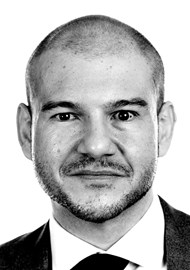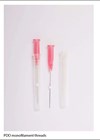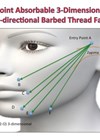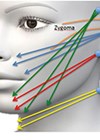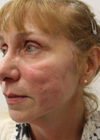A true facelift can only be achieved through surgical means, at least for now, and given advances in techniques and anaesthesia, this has become far safer. Not everyone, however, requires a facelift. Non-surgical modalities such as thread lifts with or without adjuvant dermal fillers may prolong the need for surgery, and perhaps even remove it as an option for some.
In the last 20 years suspension threads have become more and more popular. This is in part due to better materials, understanding of biomechanics and maybe more importantly, understanding of the ageing face and anatomy.
The ageing face is characterised by volume loss of the deep fat compartments as well as displacement of these. This was initially described by Rohrich and Pessa’s landmark paper in 2007 [1]. This understanding describes the lack of support and architecture of the overlying superficial fat and skin, resulting in jowl formation (sagging jowls), deeper naso-labial and marionette folds, and an overall ageing face.
Suspension threads have aimed to elevate the skin back to a natural position. In the past, some thread materials and techniques failed to achieve this, other threads managed this, however, only for a short period. More recently, in the last decade, we are seeing exceptional, natural results, with low risk and increased longevity.
Successful thread lifts
Isse et al. [2] published work on the concept of inserting resorbable cones between retaining knots on a polypropylene suture. It was surgically anchored to the temporalis fascia. This proved stable and efficient, allowing retightening at two to three years.
In 2011, Dr Pizzamiglio and Dr De Benito, popularised bidirectional sutures made of poly-L-lactic acid (PLLA) and the cones of PLLA and a glycolic polymer. The bidirectional nature of the cones, sited into subcutaneous tissue, above superficial musculoaponeurotic system (SMAS), allows counter traction and instant mechanical elevation.
“As with every patient it is our responsibility to discuss all treatments options with our patients”
PLLA is a material which has been used in surgery for many years. At three months, it begins to biodegrade, stimulating collagen production, resulting in a biological lift. There is evidence that this is collagen type I, which is structured and longer lasting than immature collagen [3].
Threads such as Silhouette Soft therefore achieve both a mechanical lift of the skin, as well as a biological hold with the induction of new collagen formation.
Why combine threads and injectables?
Full facial assessment of the ageing patient is paramount, to understand the deficit and therefore how to best manage the process. Profound volume loss should be restored, for example, with a filler in the first instance, to allow for a better elevated transposition of overlying skin.
Threads are merely a tool in an aesthetic practitioner’s box to address an ageing process which has occurred, allowing us to restore youthful features. Some of these youthful features include an elevated, lateral cheek height in women, and a tail of brow equal or higher to the head of the brow. As discussed above, deflation of lateral deeper fat pads results in descent of facial tissue, leading to peri-oral sagging (nasolabial folds and marionette lines) and formation of jowls. We know that by re-inflating these areas of volume loss, using deeply placed filler onto periosteum, we can support sagging tissue and even achieve some degree of lift. Once re-volumised, further volume would only serve to make a patient too wide or inflated, and go beyond a natural aesthetic appearance.
This is where suspension threads have their role. They serve to transpose soft tissue (namely sagging skin) to a more elevated position. Although the lift itself is minimal, in conjunction with the higher fullness achieved with fillers, there is a definite, discrete improvement in facial contours.
Silhouette Soft threads are attached to two 12cm, 23g needles, one at each end. Four to five threads are usually sited on each side of the face. There is minimal down time, with entry and exit points healing in a couple of days. While suspension threads are great for lifting sagging skin, they cannot address temple hollows or compensate for boney loss in the chin. Filler is therefore the more appropriate choice of treatment. Neuromodulators too can be used in conjunction with fillers and threads to add value to the treatment results. By weakening platysma (facial muscle depressors), we can allow the facial muscle elevators to work better. This helps to achieve a better result, as well as allowing for less downward tension on the threads, and therefore better settling of the threads.
What are the disadvantages to this approach?
The more treatments carried out, either at once or over more than one session, will carry longer downtime, and an increased cost to the patient. This is relevant for several reasons. Perhaps most important is the cost to benefit ratio. If multiple treatments are initiated at an escalated cost comparable to a surgical procedure, while at the same time not offering a surgical result, we must wonder whether it is worth proceeding. This should all be discussed with patients during the consent process. It is their decision to make, not the practitioner’s.
There are currently no published studies regarding risks and complications following these threads. Risks of both thread treatment and dermal fillers include more commonly bruising and swelling, and far less commonly, haematoma and infection. Sinclair has stated that an unpublished report found an infection rate of below 0.1%. PLLA has been used extensively in surgical internal sutures for decades and is deemed non-cytotoxic and non-carcinogenic.
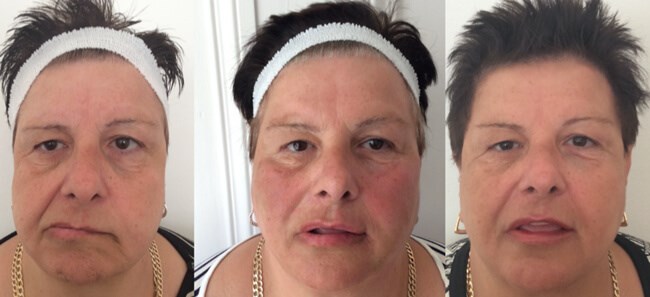
Figure 1: Before and after combination treatment in a Bell’s palsy patient.
Who is the ideal patient for this treatment?
As with every patient it is our responsibility to discuss all treatments options with our patients, whether we offer these treatments or not. A patient who attends seeking treatment for jowls should be offered advice about non-surgical and surgical options of treatment. The best overall non-surgical treatment would include volumising deflated areas, augmenting chin and jawline where appropriate, and then transposing skin using suspension threads. Skin tightening devices alongside fillers and threads can work well.
Patients with thin, crepe skin are not great candidates for many types of threads. Skin tightening procedures or collagen inducing fillers may be considered beforehand to ‘prime’ the patient.
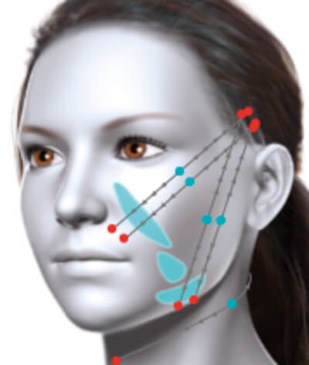
Figure 2: Full-face treatment: 10 sutures 5 x 8-Cone sutures / side.
Practitioners must be honest about the degree of lift that will be achieved and how long it will last. The best results, as discussed, come from combined treatments. Post treatment patients are encouraged to be meticulous about keeping the face clean for the first few days until the entry points (from an 18g needle) close over. They are also asked to sleep on their back for a couple of weeks and to avoid any extremes of facial activity for a month. This allows the body to produce type III collagen to help ‘grip’ the threads, allowing for maximal hold in the transposed position. Patients whose expectations are not aligned with the anticipated results will ultimately be unhappy. Patients who do not appreciate what is achievable and those who are unlikely to comply with post treatment instructions should not proceed with treatment.
I have used combination treatments of threads, fillers and toxin in patients suffering from unresolved Bell’s Palsy to help restore some symmetry, to very good effect. These patents had been denied surgery and resorted to social isolation. While potentially not ideal patients, the incremental difference achieved meant the world to them.
References
1. Rohrich RJ, Pessa JE. The fat compartments of the face: anatomy and clinical implications for cosmetic surgery. Plast Reconstr Surg 2007;119(7):2219-2.
2. Isse N. Silhouette sutures for treatment of facial ageing: facial rejuvenation, remodelling, and facial tissue support. Clin Plast Surg 2008;35:481-6.
3. Consiglio F, Pizzamiglio R, Parodi PC, et al. Suture with resorbable cones: histology and physico-mechanical features. Aesthet Surg J 2016;36(3):NP122-7.
SUMMARY OF TIPS AND TRICKS
-
Always volumise first. It allows better hold / anchorage of threads.
-
Unsuitable for thin, crepe skin patients.
-
Manage patient expectations.
-
Clean procedure. While not sterile, it should be treated as such.
Declaration of competing interests: The author is a member of the Allergan Medical Institute Mentorship Programme and has been a UK Silhouette Soft Trainer.
COMMENTS ARE WELCOME



